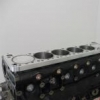Engineer Certificate
Announcements
-
Similar Content
-
Latest Posts
-
Those car show concepts from the 2000's and 2010's like the Floria and IDx were brilliant and should've gone ahead, at least one of them. But neither Honda nor Nissan are thinking about affordable performance any more, which is truly sad. Even if Toyota's liquid hydrogen ICE development reaches the point where it's commercially viable and the infrastructure to support it, Honda/Nissan would have to wait until Toyota allow fee access to their patents to offer it with any smaller performance models they released to take advantage of it.
-
A sporty manual RWD coupe with a IL4 Honda engine would only be a good thing I assume we won't see anything released for a few years though, unless informal talks and designs have been going on for a few years, and due to the current, and future, emmisions and safety requirements, I assume anything "sporty" they would do would be at least some hybrid thingie And hopefully anything they are thinking of has nice lines, without lots of plastic and fake bits hanging off it like that horrendous FK8 that looked like it was designed by a 13 year old The other issue of course in the current market is cost, currently the type R is around $70k, a twin is around $50k Meh, I'm old and grumpy and would rather buy a older model car and waste my coin on that than buying anything currently available new
-
Nissan needs to forget about building SUVs in every size possible and bring back the damn Silvia/200sx duo to compete with the 86/brz. Maybe with the Honda type r motor pointing the right way
-
Good to see you followed your heart, got your dream car and have it pretty well sorted out now. I think anyone can get caught out with a seller not being 100% honest about a cars problems. Can relate to all the electrical issues, had similar issues with my first car (mk2 escort) ages ago
-
By Watermouse · Posted
I just bought the Nexus S3 for my gtt, haven’t installed it yet as I’m collecting parts to do everything at once…so far spent $14,000 The Nexus is nearly future proof
-







Recommended Posts
Create an account or sign in to comment
You need to be a member in order to leave a comment
Create an account
Sign up for a new account in our community. It's easy!
Register a new accountSign in
Already have an account? Sign in here.
Sign In Now